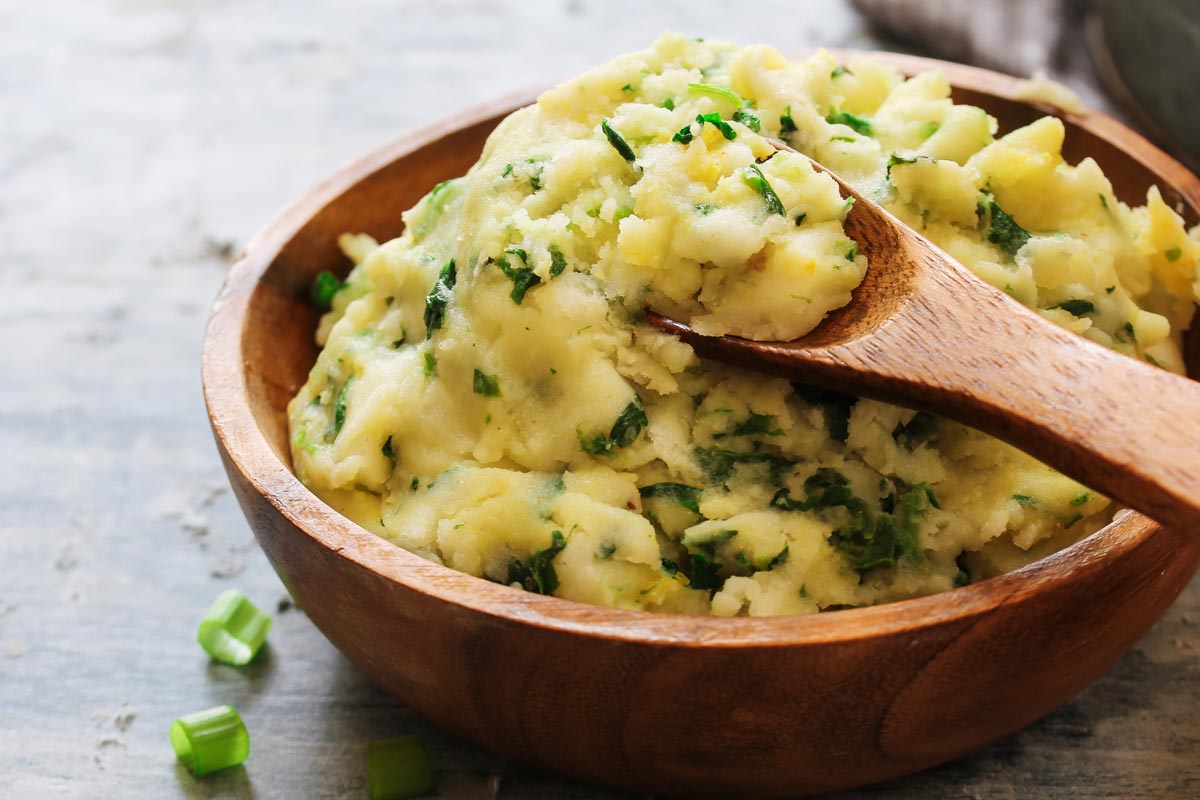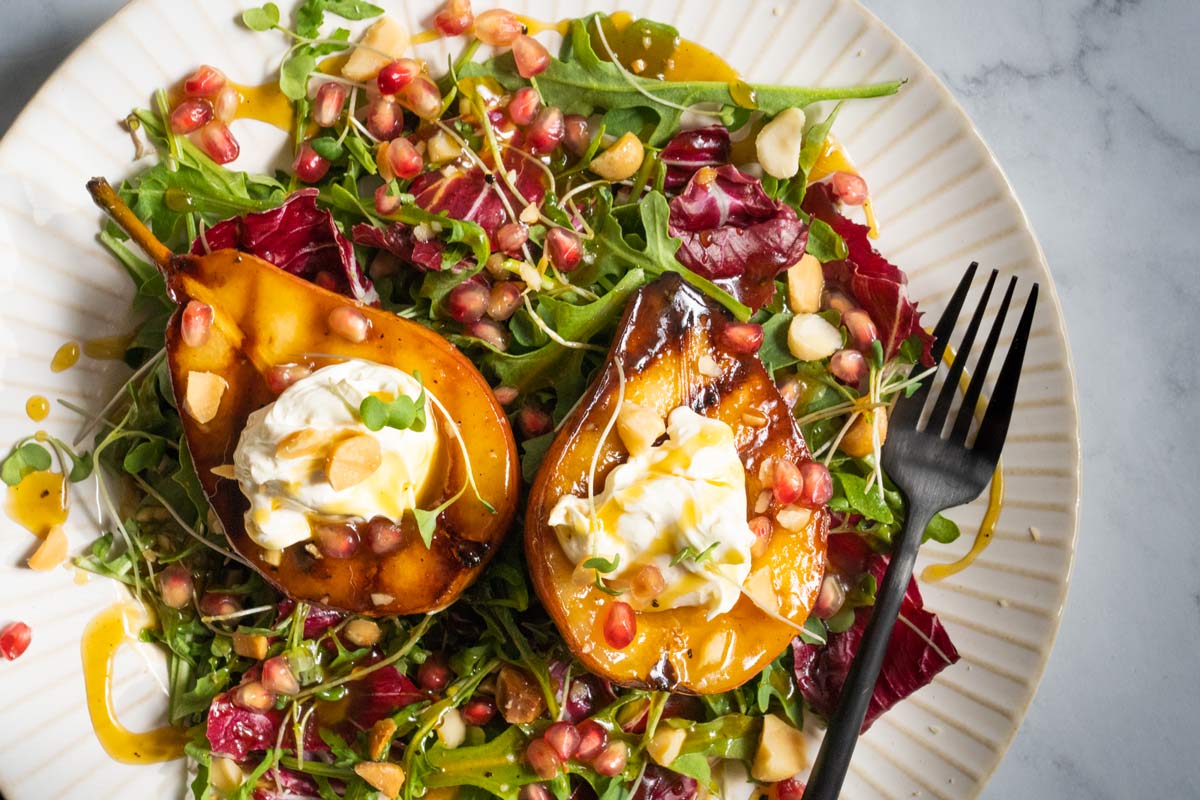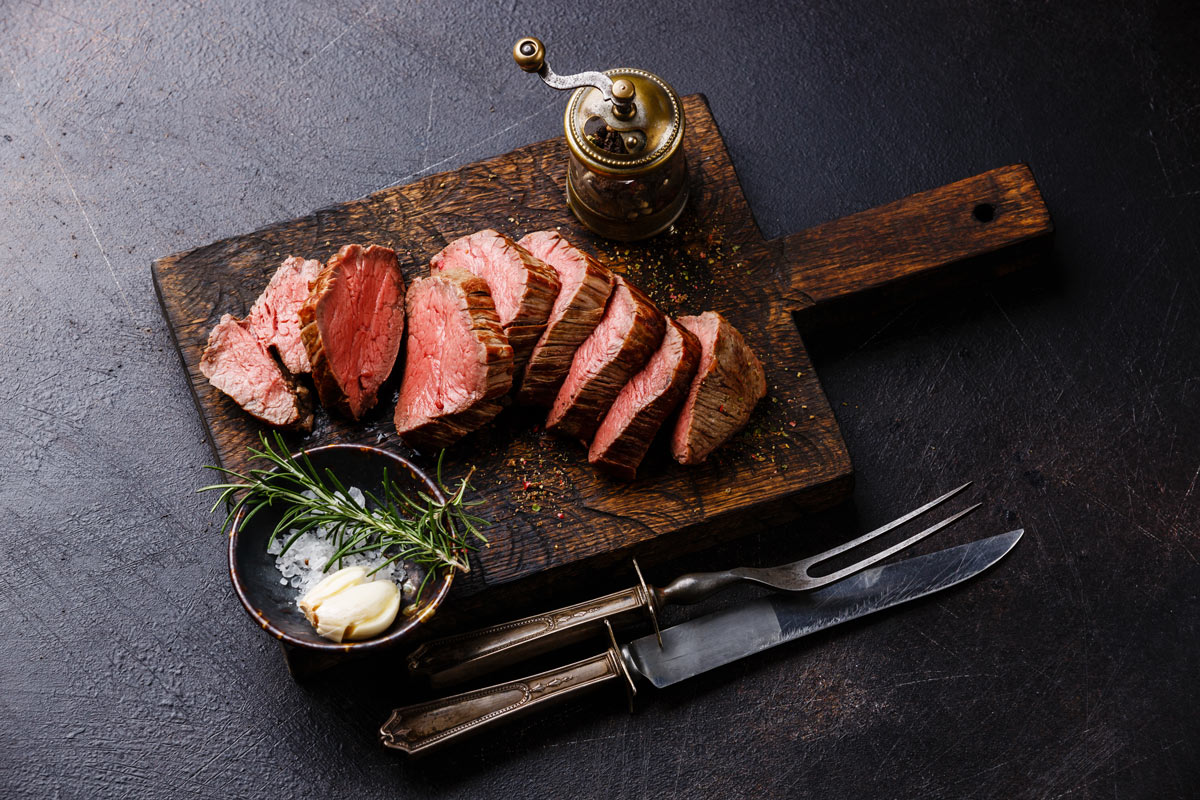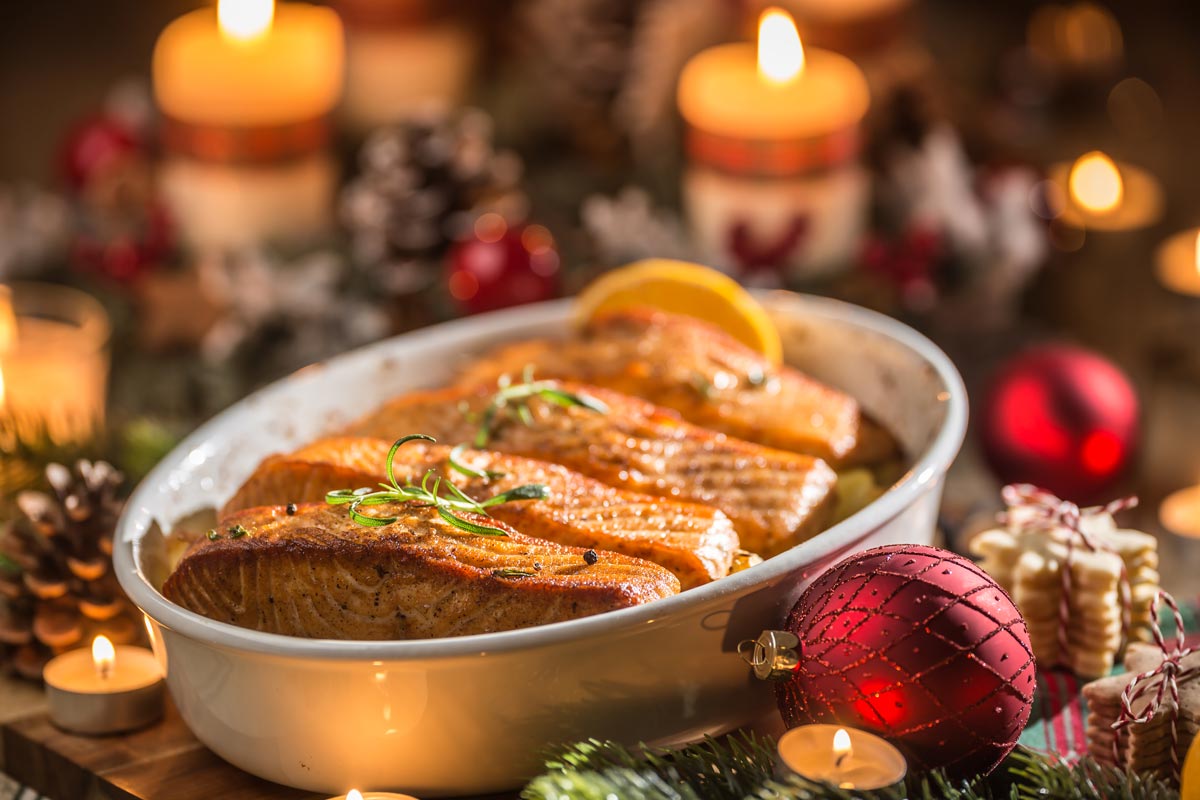Are you expecting a dairy-free guest? These rustic potatoes will “wow” them. And the final picturesque drizzle of fresh extra virgin olive oil makes the potatoes Instagram-worthy.
Ingredients
- 2 pounds washed, unpeeled Yukon Gold potatoes, cut into 1-inch pieces
- 4 garlic cloves, peeled and coarsely chopped
- 1/3 cup extra virgin olive oil, plus more as needed
- 1/4 cup scallion, trimmed, white and green parts finely sliced crosswise
- 4 cups finely chopped Tuscan kale (1 small bunch)
- 2 tablespoons minced fresh rosemary
- Sea salt and freshly ground black pepper
- Pinches of red pepper flakes (optional)
Directions
Step 1
Place the potatoes, garlic, and 1 teaspoon of salt in a large pot and fill it with enough water to cover the potatoes by 1 inch. Bring to a boil and cook the potatoes until fork tender, about 15 to 20 minutes. Drain the potatoes, reserving 1 cup of the cooking liquid.
Step 2
Heat a skillet over medium heat. Add a tablespoon of olive oil, the scallions, and kale, and cook until wilted, 1 to 2 minutes. Set aside.
Step 3
Use a potato masher to coarsely mash the potatoes and garlic. With a rubber spatula, fold in the 1/3 cup olive oil, 1/2 cup of the reserved cooking liquid, the kale, scallions, rosemary, 1/2 teaspoon salt, and freshly ground black pepper. Continue folding until creamy, adding up to 1/2 cup more cooking liquid and additional drizzles of olive oil, if desired. Season to taste with up to 1/2 teaspoon more salt and pinches of red pepper flakes, if desired. Serve hot.
Serves 4 to 6 — Recipe adapted from loveandlemons.com




